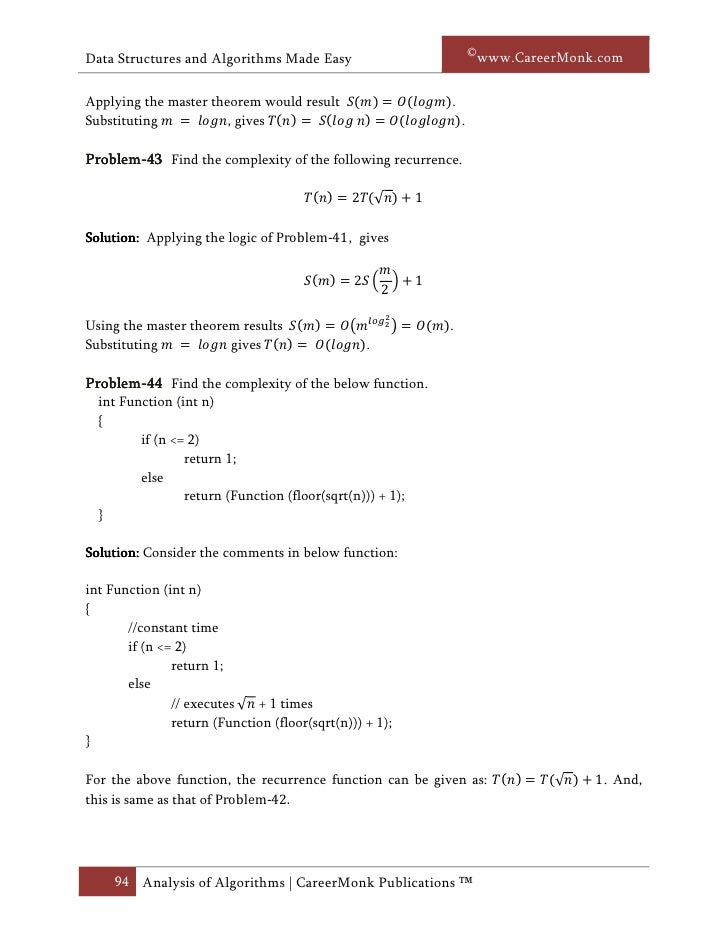T n c n c 1 at n b θ ni n c 1 has as its solution.
Master theorem floor.
Endgroup marnixklooster reinstatemonica jan 7 14 at 19 58.
Simplified master theorem a recurrence relation of the following form.
Master theorem i when analyzing algorithms recall that we only care about the asymptotic behavior.
Saxe in 1980 where it was described as a unifying method for solving such.
Rather than solve exactly the recurrence relation associated with the cost of an algorithm it is enough to give an asymptotic characterization.
2 if a bi then t n θ ni log b n work is the same at each.
Master theorem worksheet solutions this is a worksheet to help you master solving recurrence relations using the master theorem.
If f n o nlogb a for some constant 0 then t n θ nlogb a.
There are 3 cases.
Go ahead and login it ll take only a minute.
For each recurrence either give the asympotic solution using the master theorem state which case or else state that the master theorem doesn t apply.
Practice problems and solutions master theorem the master theorem applies to recurrences of the following form.
Master theorem is used in calculating the time complexity of recurrence relations divide and conquer algorithms in a simple and quick way.
1 if a bi then t n θ nlog b a work is increasing as we go down the tree so this is the number of leaves in the recursion tree.
Recursive algorithms are no di erent.
This theorem is an advance version of master theorem that can be used to determine running time of divide and conquer algorithms if the recurrence is of the following form where n size of the problem a number of subproblems in the recursion and a 1 n b size of each subproblem b 1 k 0 and p is a real number.
The main tool for doing this is the master theorem.
Doing so will earn you entry into the elite ranks of the master theorem.
Begingroup did i think the op has a valid question as this is one of several points in the master theorem proof where the authors gloss over details.
In the analysis of algorithms the master theorem for divide and conquer recurrences provides an asymptotic analysis using big o notation for recurrence relations of types that occur in the analysis of many divide and conquer algorithms the approach was first presented by jon bentley dorothea haken and james b.
T n at n b f n where a 1 and b 1 are constants and f n is an asymptotically positive function.
The herculean test of your grit is as follows.
If a 1 and b 1 are constants and f n is an asymptotically positive function then the time complexity of a recursive relation is given by.
I have tried to make this question self contained by snipping the appropriate parts from this book.
Find the word or phrase solution to each one of my encrypted logic puzzles called theorems in my beautifully designed puzzle book.

